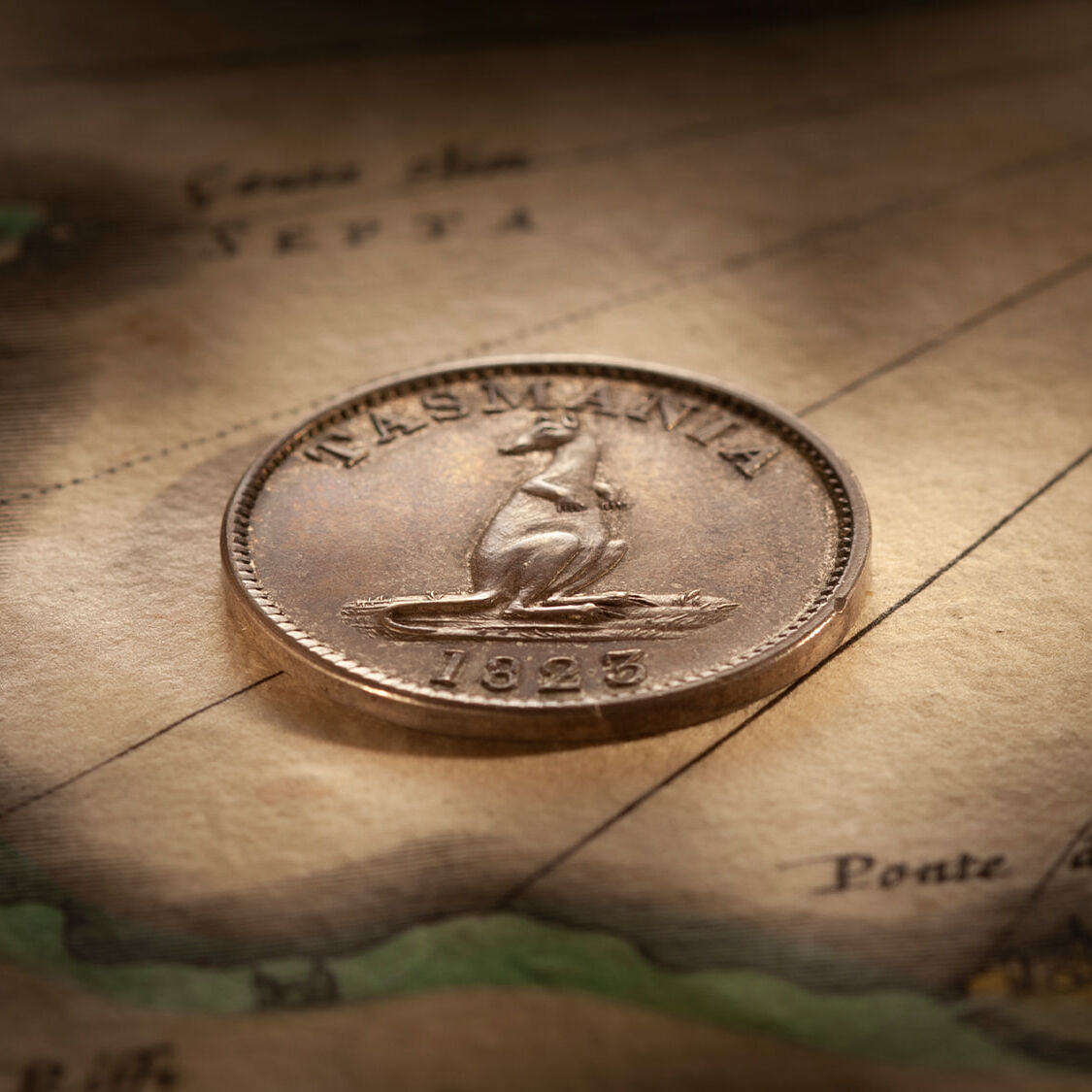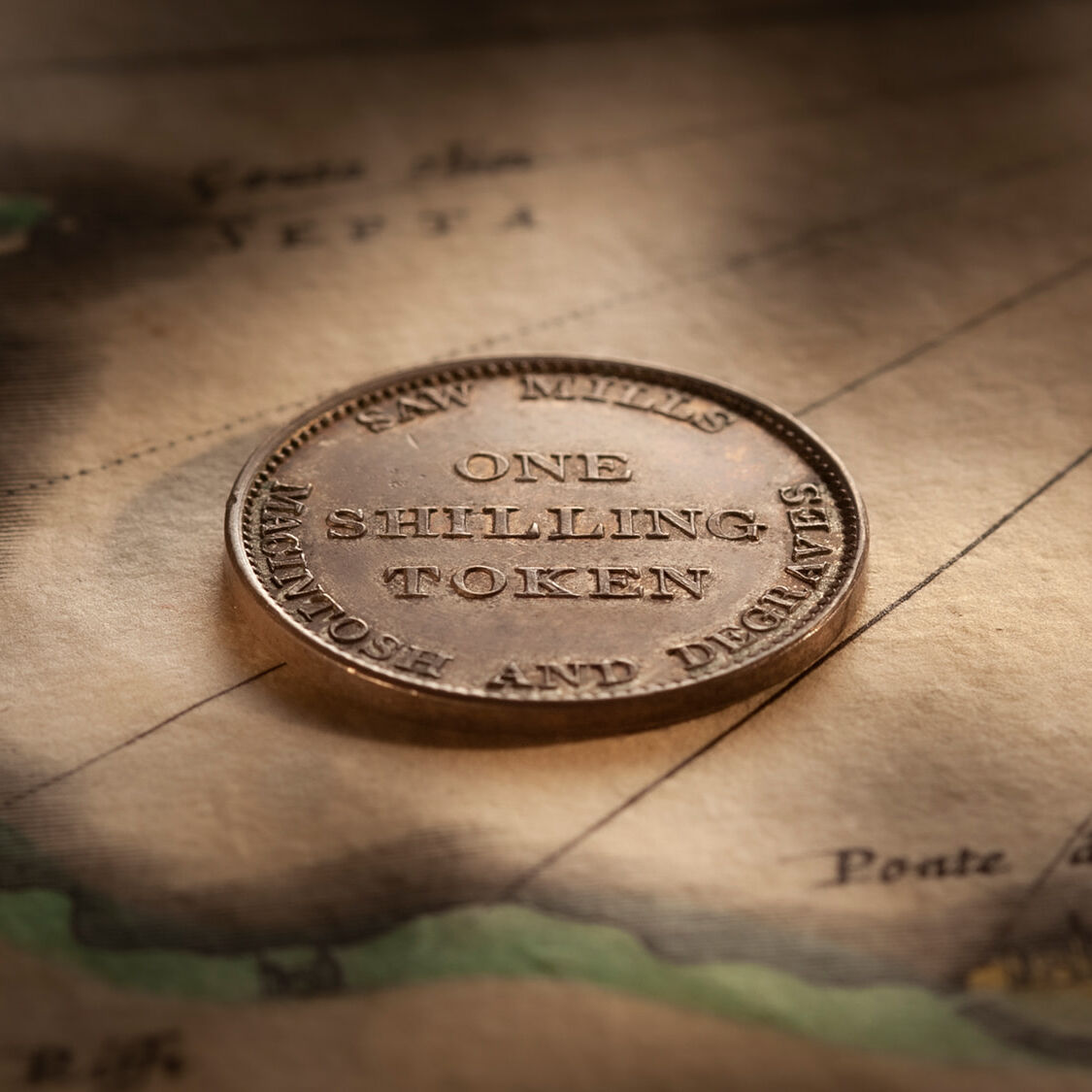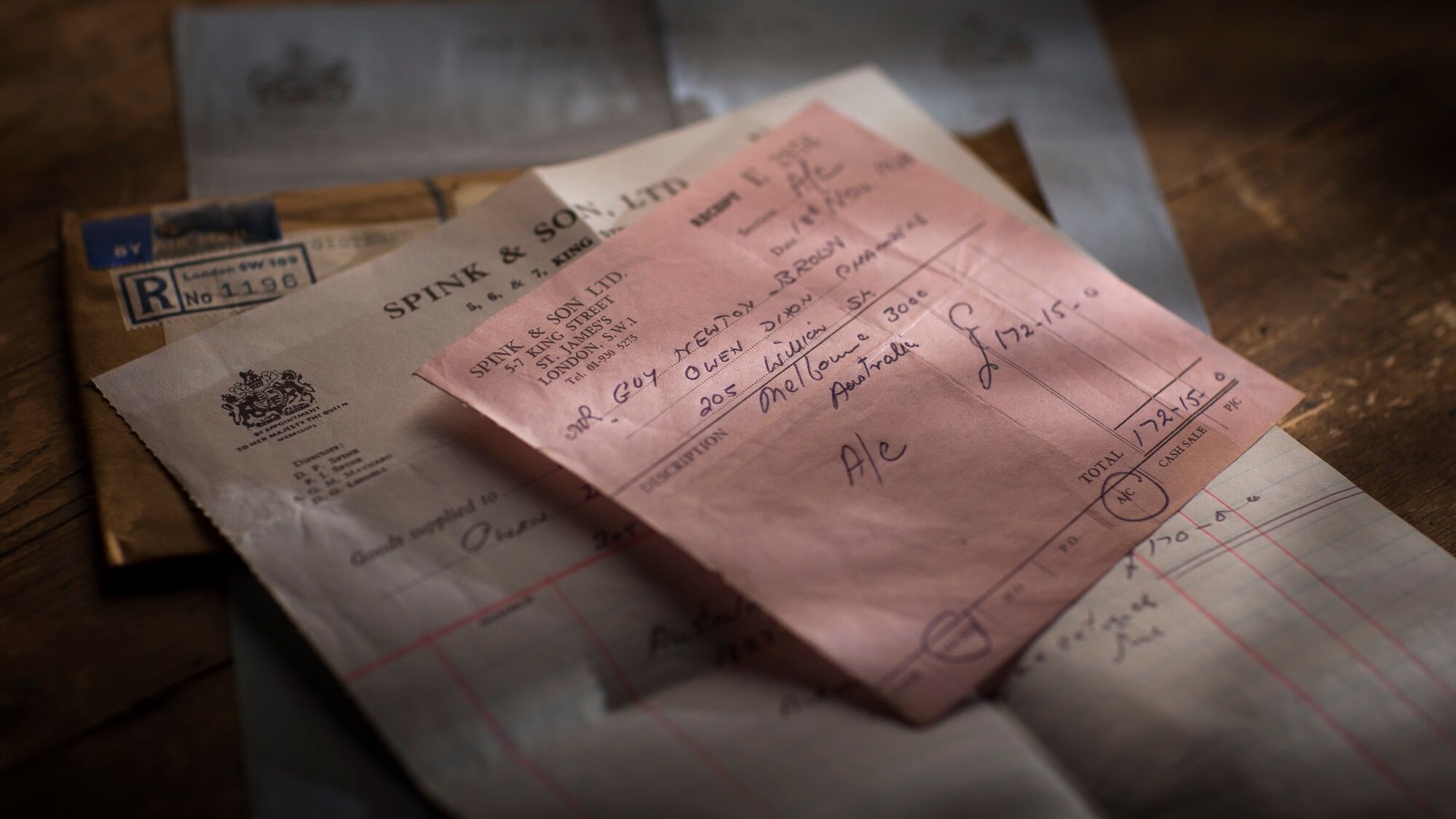1823 Macintosh and Degraves Tasmania Silver Shilling and one of two known at this quality level


The industry acknowledges that there are perhaps thirty known examples of the Macintosh & Degraves Shilling.
A minuscule number in anyone's language.
Of those, only two pieces are rated highly at About Uncirculated, with none higher. The two pieces are this shilling, formerly owned by barrister Guy Newton-Brown and that of the late Sir Marcus Clark.
An early written reference to the Macintosh & Degraves Shilling occurred in the 1864 Numismatic Chronicle by the President of the Royal Numismatic Society, William Sandys Wright Vaux.
He commented that the London National Collection had acquired a Macintosh and Degraves Shilling in 1848.

Formerly owned by Melbourne barrister Guy Newton-Brown this Macintosh & Degraves Shilling is sold with historical papers including:
- Invoice from Spink & Son London, dated 18 November 1968 for £170.
- Correspondence from Spink & Son London dated 19 November 1968.
- Original package addressed and sent by Registered Air Mail to Guy Newton Brown from Spink London.
Major Hugh Macintosh
An ex-officer of the British East India Company, a veteran and a hero of some of India's bloodiest battles. After India, Macintosh went to Persia as a military advisor to the Shah and became a close friend and advisor to the Persian Crown Prince. He was a highly cultured man, a painter and violinist and fluent in five languages.
Macintosh emigrated from England in 1824 on his ship 'Hope'. After purchase of the ship, plants and material required to start a new life, it was documented that Macintosh still had disposable capital of £5000. (The more cash, the more land grant entitlements private citizens could expect.)
Hugh Macintosh was also in a relationship with Mary Reibey, an emancipated convict who by 1820 had become Australia's richest businesswoman. The plan for a private issuing of a silver shilling was said to have hatched from discussions with Reibey when she returned to England in 1821.
Peter Degraves
Degraves emigrated from England with his brother-in-law Hugh Macintosh. He was a brilliant engineer, inventor, architect and an innovative businessman. He was also a thief, a bully, a conman and a prolific liar and by 1850 one of Australia's richest, yet most ruthless men.
The Macintosh and Degraves partnership
The Cascade estate was originally a saw milling operation run by a partnership called Macintosh and Degraves Sawmills. The mills began operating in 1825 and the brewery was founded in 1832 by Hugh Macintosh while Peter Degraves was in Hobart prison serving a five year sentence for non-payment of debts accrued in England.
After his release in 1832, Degraves took over running and expanding the brewery. After the death of Macintosh in 1834, Degraves began falsifying the history of the Cascade Brewery, fabricating it for his own prosperity making sure that Macintosh was viewed as having played a minor role.
Research by Australian historian Greg Jeffreys showed that the major partner in the Cascade Mills and Brewery had actually been Macintosh.
The Macintosh and Degraves Shilling is one part of history that could not be altered with Macintosh's name before Degraves, acknowledging him as the main shareholder. This Shilling represents an historical truth that without Hugh Macintosh, the existence and success of the Cascade Saw Mill and Brewery would never have materialised.
© Copyright: Coinworks
